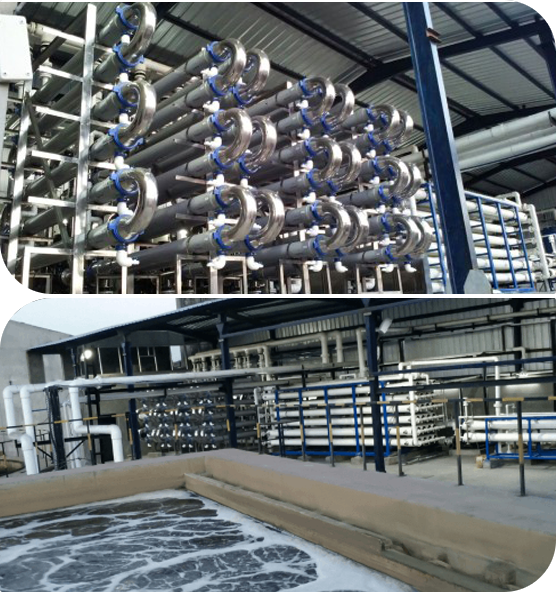
Waterman Engineers Australia is among the top suppliers of Zero Liquid Discharge procedure. A ZLD method is usually a therapy approach which can be utilised to remove every one of the liquid waste from a system. The target of ZLD water remedy is to cut back wastewater economically and create potable h2o that is healthy for typical use. Zero discharge procedure is an advanced procedure strategy that comprises ultrafiltration, reverse osmosis, evaporation and fractional electro deionization. And we're a perfectly-known provider of ZLD programs.
In many Industries, which include electric power, oil & gas, substances, mining and Some others, a large amount of wastewater is created that must be managed. Conventionally, this discharge of wastewater is finished by way of a plant outfall to the surface area h2o physique like an evaporation pond, or occasionally deep effectively injected. These tactics bring about lots of environmental considerations by the general public in many regions of the earth, as water can be a scarce resource and its administration needs to be monitored. These fears have resulted within the establishment of ZLD procedures by lots of industries to lessen their environmental footprint and boost sustainability. And, Waterman Engineers Australia are ideal ZLD suppliers you'll find for this system.
Homes OF ZERO LIQUID DISCHARGE Process
The Attributes of the Zero Liquid Discharge method could vary depending upon the precise design and technological innovation utilized. On the other hand, some prevalent Homes of ZLD programs include:
Water Conservation: One of the first targets of ZLD methods will be to conserve h2o by minimizing the discharge of liquid waste to the surroundings.
Higher H2o Purity: ZLD methods are made to develop substantial-good quality drinking water that is certainly totally free from impurities and contaminants, which makes them appropriate for use in many industrial processes.
Flexibility: ZLD techniques tend to be built to support a broad selection of enter liquid streams, which makes them functional and appropriate for use in different industries.
State-of-the-art Wastewater Remedy: Zero liquid discharge systems use State-of-the-art wastewater therapy techniques to eliminate impurities and contaminants with the effluent, generating substantial-high-quality water.
Squander Reduction: ZLD methods assist reduce waste by cutting down the quantity of liquid waste that should be disposed of and by developing a concentrated, sound squander product which can be securely disposed of.
Strength Performance: ZLD systems is often Power-intensive as a result of substantial Vitality necessities of evaporation along with other wastewater therapy processes. Even so, advancements in technological know-how are making Zero liquid discharge systems much more Power-effective and cost-efficient.
Waterman Engineers Australia manufactures Zero Liquid Discharge (ZLD) methods made to eliminate all liquid squander, aiming to provide potable drinking water and decrease environmental affect. Their ZLD methods usually consist of ultrafiltration, reverse osmosis, evaporation, and fractional electro deionization. Key systems utilised are Falling Movie Brine Concentrators, Pressured Circulation Crystallizer, and Other people, having a two-move strategy of pre-concentration and evaporation/crystallization to Get better and reuse drinking water. These units are adaptable to unique industries, emphasizing drinking water conservation, high drinking water purity, waste reduction, and Electricity efficiency. Technological specs are varied and customizable, thinking of aspects like h2o source, move charge, and feed h2o top quality.
The need for Zero Liquid Discharge (ZLD) devices arises from the necessity to deal with environmental considerations associated with drinking water scarcity and air pollution. In industries like energy, oil & gasoline, and mining, vast amounts of wastewater are generated. Usually, this Zld System Manufacturer Zero Liquid Discharge System wastewater is discharged into bodies of h2o, triggering air pollution and depleting clear drinking water means. ZLD methods goal to reduce these impacts by managing and recycling wastewater within the industrial method, therefore conserving drinking water, lessening squander, and advertising sustainability.
When contemplating the complex requirements of the Zero Liquid Discharge (ZLD) process, important areas to give attention to incorporate the drinking water supply it is going to handle, the technique's stream amount, the caliber of feed drinking water, the stages of therapy involved, the Restoration level of h2o, procedures for focus disposal, components of building, operating conditions, and system automation and Command. These things make sure the program's usefulness, longevity, and effectiveness in treating and recycling industrial wastewater.
Zero Liquid Discharge (ZLD) crops present Positive aspects including h2o conservation, waste reduction, and air pollution prevention, contributing to environmental sustainability. They're relevant in industries like energy technology, oil and gasoline, chemicals, and mining, wherever they help in running industrial wastewater properly, decreasing the ecological footprint, and complying with demanding environmental rules. These systems are critical in locations struggling with water scarcity and for industries aiming to boost their sustainability and operational efficiency.
FAQs for the Zero Liquid Discharge (ZLD) system typically handle its operational ideas, Charge-effectiveness, servicing prerequisites, environmental effect, applicability throughout many industries, and regulatory compliance. These queries enable users recognize the procedure's Advantages, specialized calls for, and suitability for their precise wastewater administration desires.
one. Zero Liquid Discharge (ZLD) is a wastewater remedy approach meant to eliminate all liquid waste.
two. The system's components are influenced by the specific industrial procedure, wastewater composition, and regulatory needs.
3. Effluent treatment method vegetation take away pollutants from textile effluents to prevent environmental contamination.
4. Advantages consist of water conservation, air pollution reduction, and regulatory compliance.
five. The purpose is to reduce environmental effect by recycling drinking water and cutting down waste.
6-9. Effluent therapy plants are levels in wastewater cure: Key (Bodily separation), secondary (Organic treatment), and tertiary (Highly developed treatment method).
ten. Device operations consist of filtration, sedimentation, Organic treatment method, and disinfection.
11. Restricting parameters are variables that have an effect on the therapy's performance, like pH and contaminant concentration.
twelve. Design and style concerns include stream charge, effluent composition, and desired excellent of handled h2o.